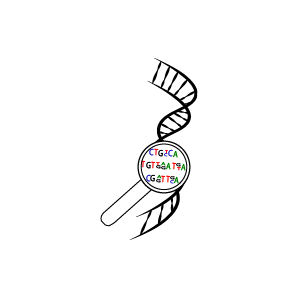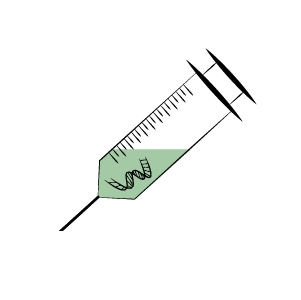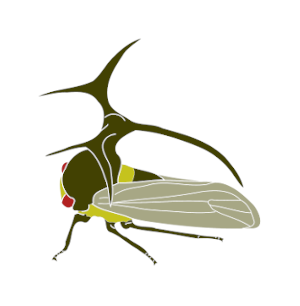Research
In light of evolution by natural selection, which can only operate on existing variation, where do new morphologies and new phenotypes come from? Understanding diversity requires understanding the origin of novelty. I am interested in understanding the genomic substrate from which body plan innovation and physiological adaptation arise. I tackle these questions at two evolutionary time-scales. Treehopper helmets first arose and radiated around 150 million years ago — the long game. Insecticide resistance in mosquitos, on the other hand, has evolved at the human time scale, within the last hundred years.
Hierarchical clustering of three subsets of genes based on gene expression in leafhopper nymphs (left) and treehopper nymphs (right)
Gene expression during development — comparative transcriptomics
What differentiates treehoppers from their closest relatives is their helmet: a 3-dimensional outgrowth of their dorsal body wall, which has been molded by natural selection to aid in all manner of predator evasion. In our quest to understand how treehopper development has changed to give rise to this fascinating structure, I employ cutting edge sequencing technologies and comparative gene function analyses.
The novel treehopper helmet affords a three-dimensional morphospace in which treehoppers have evolved an array of shapes suited for predator evasion by crypsis, mimicry, or aposematism. My RNA-seq data show that the helmet, a projection of the thoracic body wall, evolved by co-option of a suite of genes ancestrally involved in wing patterning. The first phase of this research was recently published in Nature Ecology and Evolution. Phase two is now underway, and we are analyzing similar data for two more treehopper species, Microcentrus caryae and Enchenopa binotata.
Treehoppers are fascinating, and you can read more about my work with them at The Smithsonian Magazine.
This violin plot shows the density and distribution of SNPs across the new Rockefeller genome. SNPs were identified from a pool of five mosquitos from the Rockefeller strain, so this distribution represents the inherent population-level polymorphism.
Comparative genomic analysis of Cytochrome insecticide resistance
The yellow fever mosquito, Aedes aegypti, is a globally distributed pest and vector of human diseases, notably Dengue fever and Zika. Vector control through the use of pesticides is a critical component of public health strategies, yet—natural selection being what it is—resistance to pesticides evolves rapidly and repeatedly in this and other pest organisms. Target-site mutations, i.e., amino acid substitutions in the genes targeted by pesticides, are relatively straightforward to ascertain, but pests also evolve enhanced metabolic detoxification. In my study system, the "Singapore" strain of Ae. aegypti, we have established that constitutive upregulation of a handful of CYP genes produces a ~300-fold resistance to pyrethroid insecticides; however, the causal mutations are unknown. This hampers innovation in pesticide development and complicates surveillance efforts to detect early signs of resistance in wild populations.
My approach involves integrating long-read (but error-prone) whole genomic sequencing with short-read (but accurate) whole-genome shotgun reads to accurately map the resistance loci. To gain resolution, I employ a five-strain introgression system, with three strains derived from (congenic to) the CDC “Rockefeller” strain (the most widely-used insecticide susceptible reference strain) with different combinations of resistance phenotypes introgressed from the Singapore strain. The first step of this project, creating a new chromosome-level genome assembly for the Rockefeller strain, is complete, with a manuscript in preparation and the assembly and associated data deposited in GenBank. Sequencing and initial data analysis are complete for the second phase of this project, mapping the resistance locus on Chr. 1. The third phase of this project, currently in design and planning, will be deep resequencing of candidate loci from multiple individuals of each strain.
Wild-type specimen of Oncopeltus fasciatus, the large milkweed bug.
Investigating phenotype evolution informed by transcriptomics
In recent decades, advances in genomics and transcriptomics have made it easier to explore comparative questions about development in insects outside of Drosophila, including insects with incomplete metamorphosis. Inspired by the results from my treehopper gene expression studies, I investigated the function of some important genes in the large milkweed bug, Oncopeltus fasciatus. Using reverse genetics (RNA interference), we knocked down a set of genes that, in Drosophila, are best known for their roles in wing development. However, in the metamorphosing milkweed bug, many of these genes have roles in other parts of the body wall in addition to the wings. Our results underscore the importance of comparative research across multiple insect taxa to understand the functional roles of genetic regulatory networks.
This research was recently published in Proceedings of the Royal Society B.
An adult female Entylia carinata, the treehopper model developed in our lab.
Developing a model treehopper
Exploring the development of an organism requires have a reliable colony of lab-friendly organisms. We have been developing the treehopper Entylia carinata as a tractable model treehopper. We have kept a year-round breeding colony since 2015. Our treehoppers are reared on sunflowers, and provide on average at least three broods per year.







